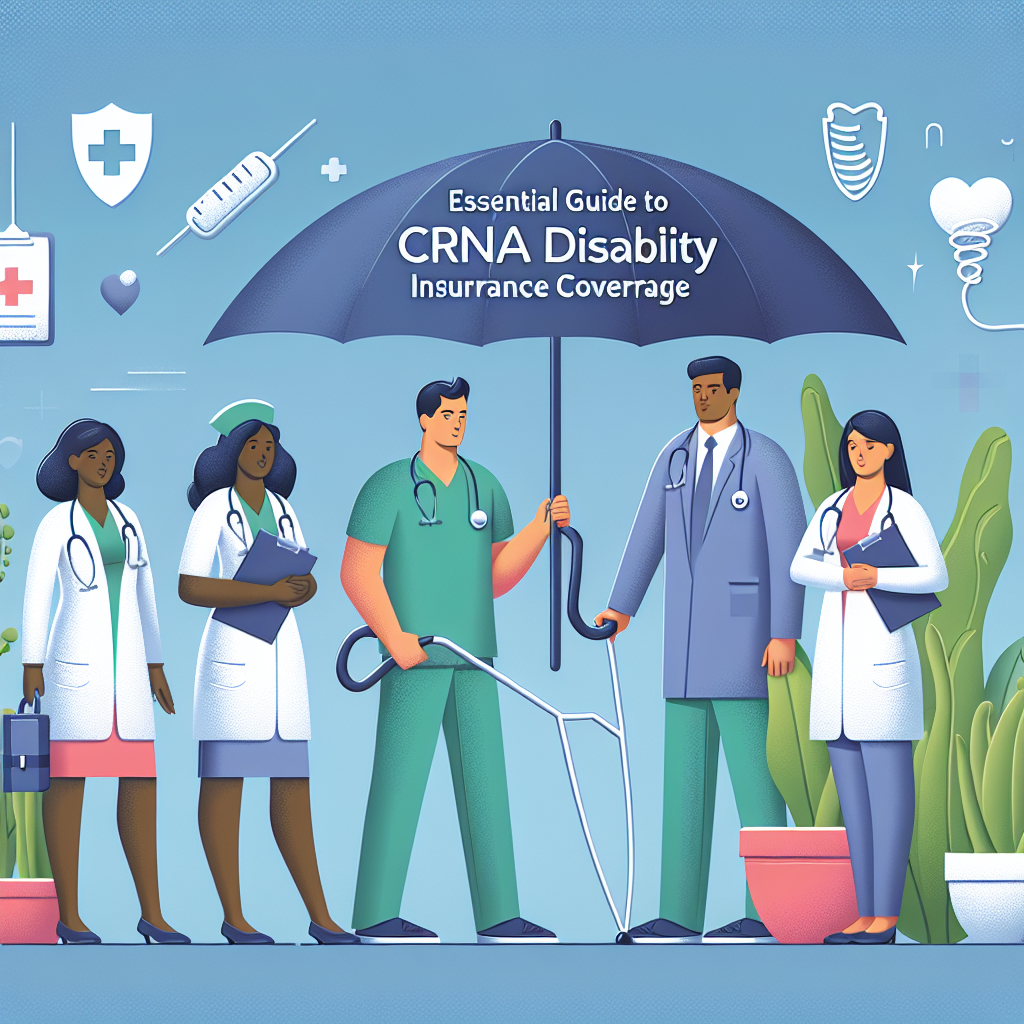Filed under Disability Insurance on
Essential Guide to CRNA Disability Insurance Coverage

The decision to pursue a career as a Certified Registered Nurse Anesthetist (CRNA) is one marked by dedication, expertise, and the potential for a rewarding and lucrative profession. However, like all professions, it comes with its own set of risks and uncertainties. One essential way for CRNAs to safeguard their livelihood is by investing in disability insurance coverage. This comprehensive guide delves into the nuances of CRNA disability insurance, equipping you with crucial knowledge to protect your future earnings and maintain financial stability.
Understanding the Importance of Disability Insurance for CRNAs
At the core of disability insurance is the assurance that your income stream continues even in the event of an unexpected injury or illness that prevents you from working. CRNAs, given their demanding and sometimes physically taxing roles, are particularly prone to job-related disabilities. Proper disability insurance coverage is not merely an option but a necessity to ensure financial security over the long term.
Key Features of CRNA Disability Insurance Coverage
Recognizing the granularity of CRNA disability insurance can be challenging, given the plethora of available policies. Here, we break down the fundamental components to consider when selecting the right coverage:
1. Own-Occupation Provision
This provision is especially vital for CRNAs, as it defines disability based on your inability to perform your specific job duties, rather than being unable to work any job. Opting for an own-occupation policy ensures that if you cannot work as a CRNA due to disability, you will still receive benefits even if you take up employment in another capacity.
2. Benefit Period
The benefit period is the length of time the insurance will pay out disability benefits, should you become incapacitated. Policies vary, ranging from short-term coverage to long-term plans that continue until retirement age. For CRNAs, a longer benefit period is advisable, offering a broader safety net in the event of prolonged disability.
3. Elimination Period
This term refers to the waiting period before benefits begin once a disability is claimed. Typically, elimination periods range from 30 to 180 days. Although a longer elimination period can reduce premiums, it also requires you to have sufficient savings in place to cover this gap.
4. Residual Disability Benefits
Partial or residual disability benefits are crucial for CRNAs who may return to work part-time and face a reduced income. These benefits compensate for the income gap caused by a limited capacity to work full-time post-disability.
5. Non-Cancelable and Guaranteed Renewable Policy
These terms ensure that your insurance policy cannot be canceled by the insurer as long as premiums are paid. The terms of the policy remain unchanged, providing peace of mind against policy cancellation or unexpected premium increases.
Factors Influencing CRNA Disability Insurance Premiums
Several elements contribute to the cost of policies. Understanding these can guide CRNAs in optimizing their coverage while managing costs effectively.
1. Occupation Classifications
Insurance providers assess risk based on occupation classifications, and CRNAs typically fall within higher-risk categories due to the nature of their work. This classification impacts the cost of premiums, reinforcing the need for specialized policies tailored to CRNAs.
2. Age and Health
Young, healthy individuals generally benefit from lower premiums, making it advantageous for CRNAs to secure disability insurance coverage earlier in their careers. Pre-existing conditions and age-related health issues may increase premium costs.
3. Coverage Amount
Your chosen coverage amount, usually a percentage of your pre-disability income, directly affects your premiums. It's crucial to balance comprehensive coverage with affordability.
4. Policy Riders
Riders add tailored benefits to basic policies, increasing coverage flexibility. For example, a cost-of-living adjustment rider can help maintain benefit value against inflation. Each additional rider affects the premium's total cost.
Current Trends in CRNA Disability Insurance
The insurance landscape evolves continually, shaped by healthcare advancements and emerging professional risks. Understanding current trends can help CRNAs make informed decisions regarding their disability coverage.
1. Increased Attention on Mental Health
As the healthcare sector acknowledges mental health's critical importance, disability insurance now often includes provisions for mental health-related disabilities. CRNAs, working under high stress, should consider policies that offer robust mental health coverage.
2. Tailored Coverage Offers
Insurers are developing more personalized policies, recognizing the unique needs of various professions. For CRNAs, this means more options that accommodate the specific challenges and requirements of the anesthesia field.
Steps to Secure CRNA Disability Insurance Coverage
The path to obtaining CRNA disability insurance involves several crucial steps:
- Identify your coverage needs based on your financial responsibilities and risk tolerance.
- Research and compare policies from multiple insurance providers to ensure you receive the best terms.
- Consult with insurance brokers or financial advisors who specialize in CRNA disability insurance for tailored advice.
- Review the policy thoroughly, understanding all terms and provisions before making a commitment.
- Reassess your coverage periodically to adapt to changes in your career or personal circumstances.
Conclusion
For CRNAs, the security provided by disability insurance coverage extends beyond immediate financial needs, forming a protective barrier over your professional aspirations and personal peace of mind. By understanding the intricacies of CRNA disability insurance, you can make informed decisions that ensure your career—and your income—continue in the face of unforeseen challenges. Investing in a comprehensive disability insurance plan is not only prudent but essential in securing the long-term viability of your professional journey. Embrace the peace of mind that comes with knowing you're prepared for whatever life may bring.



